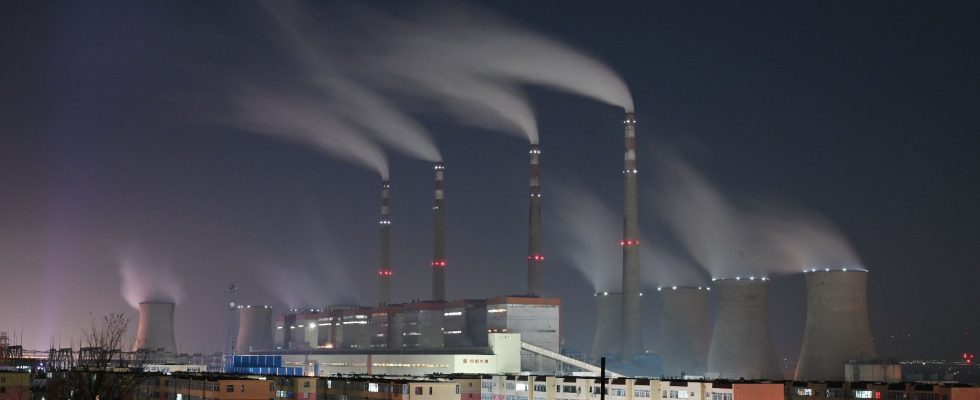China is moving against the tide. While the number of new coal-fired power plants is slowing down on the planet, the Middle Kingdom continues to massively build new electricity production sites, which are very emitters of greenhouse gases, according to the latest analysis of the sector carried out by the Global Energy Monitor. In a detailed report, this American think tank, which includes multiple international organizations and NGOs, shows that the fleet of coal-fired power plants in operation has increased by 19.5 gigawatts (GW) in 2022, an increase of less than 1%. compared to 2021. But more than half (59%) of these new installations are in China.
“This country is again the main exception, even more than in previous years, in terms of adding new coal-fired generation capacity. But its dynamics are really complex, because while it is still building many coal-fired plants, it has also invested heavily in infrastructure and renewable energy,” said Lauri Myllyvirta, analyst at the Center for Research on Energy and Clean Air (CREA), an organization that participated in the report.
New projects have accelerated
The report shows that coal-fired power generation projects in developing countries, excluding China, decreased by 23 GW, while new Chinese projects increased by 126 GW, more than offsetting the reductions observed in the rest of the world. world. “Coal-fired plant construction permits, housing starts and new project announcements accelerated dramatically in China in 2022, with new permits reaching their highest level since 2015,” the report said. As a result, coal-fired power plants under construction in China are six times greater than those in the rest of the world.
This surge can be partly explained by the record heat wave and drought that China experienced in the summer of 2022. These weather events led to a very low availability of hydroelectricity, and an increase in demand for air conditioners. According to the report, this phenomenon has tended to push central and provincial governments to pursue the development of coal-fired power stations, a costly and polluting solution but which also makes it possible to respond to the increase in the price of gas and the intermittency of the production of renewable energies.
Multiply plant shutdowns by 4
Despite this exception, progress has been made in much of the world. In Europe, where the gas crisis has prompted seven countries to allow the restart or operation of coal-fired power plants (mostly in Germany), these discrepancies in energy trajectories have been compensated by the abundance of solar energy and wind turbine and a mild winter, the report explains. As a result, total energy production from coal in the European Union grew by only 1% in 2022.
In 2021, the European Union had managed to reduce its electricity production from coal to a record level, but the gas crisis and the invasion of Ukraine by Russia led to a slowdown in shutdowns of coal-fired power plants. “Progress in phasing out coal-fired power plants in wealthy countries and canceling new projects in developing countries, despite the gas crisis that rocked global energy markets in 2022, is encouraging. Outside of China, the response to the energy crisis has been dominated by investments in clean energy, but this progress needs to be accelerated urgently,” concludes Lauri Myllyvirta.
However, this good news cannot put us on the right path to respect the commitment made during the Paris Agreement in 2015 to keep global warming below 1.5°C. “There is still a huge gap between the speed with which coal-fired power plants must close and what is actually planned”, regrets Lauri Myllyvirta. In order to be in the nails, all existing coal-fired power stations will have to close by 2030, in the richest countries, and by 2040 in all the other countries of the globe. “There is no room for the commissioning of new coal-fired power plants”, therefore remind the authors. In order to stay in the trajectory of the Paris Agreement, the end of the operation of the plants would require the withdrawal of 117 GW on average per year, or four and a half times the capacity taken out of service last year.
